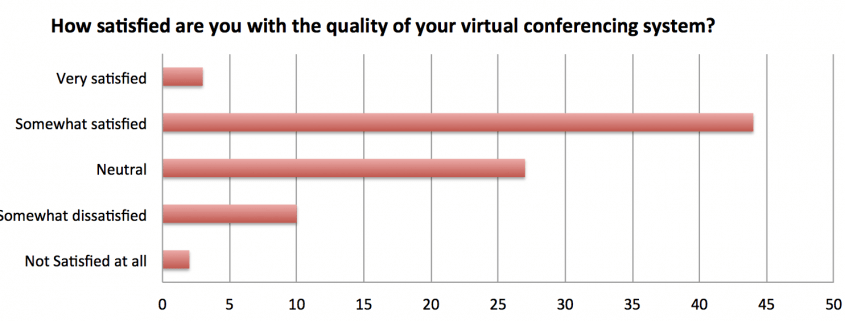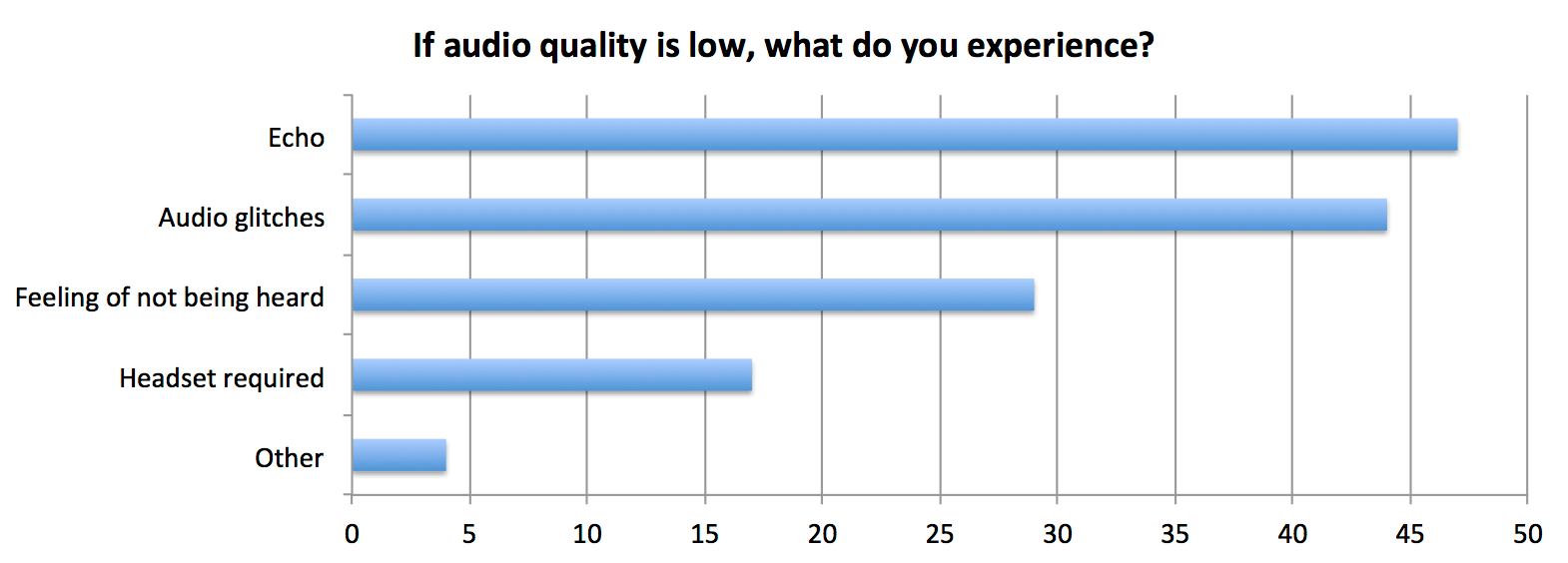Teleconferencing Satisfaction: Audio is King
During 2016 proactivaudio conducted a survey on teleconferencing satisfaction among professionals from public and private sectors. The survey aimed to understand what factors make good (and not that good) today’s videoconferencing systems for tele-collaboration. While the majority of the respondents were “neutral” or “somewhat satisfied” with their systems, it is the audio quality that turned out the main cause for negative feedback by far. Users may allow quite a few glitches in the video, but the same troubles in audio is a different story: users really need to understand their partners at all times.
Why audio quality in teleconferencing is still not good enough? Three main factors can contribute to that undesired performance: 1) RTP/IP packet jittering, 2) speech/audio compression, and 3) acoustic echo. In the early days of audioconferencing, internet was not fast enough to handle easily speech communications real time, but those slow days are long gone, so the first factor is rarely a disturbing issue today. The same goes for the second factor: Audio compression has reached technological maturity, with Skype claiming superb performance for its audio coding standard Opus. Hence, the only bad guy left to blame onto is acoustic echo (and it is running out of excuses).
Acoustic echo per se is indeed the main cause of audio discomfort. But also echo forces users to wear headsets, which prevent several participants in the same room from taking part in the audio-conference. Echo is also the indirect cause of audio glitches when the parties happen to talk simultaneously: these annoying in-and-out disturbances are actually the doing of an echo suppressor system, which prevents loudspeaker and microphone from being virtually active at the same time. As side-effect, echo suppressor creates also the feeling of “being alone” or “not being heard”.
How can we get rid of the acoustic echo efficiently, and by doing so, accomplish natural face-to-face tele-conversations? Since more than 20 years research engineers agree that an acoustic echo canceller is the solution to fix the problem. Good news. However, Skype and Google (to name a few) are yet to use effectively acoustic echo cancellation in their teleconferencing platforms. Why aren’t they? While we obviously cannot answer that question, from proactivaudio we can guess what they are missing. Check out our solution here.






Leave a Reply
Want to join the discussion?Feel free to contribute!